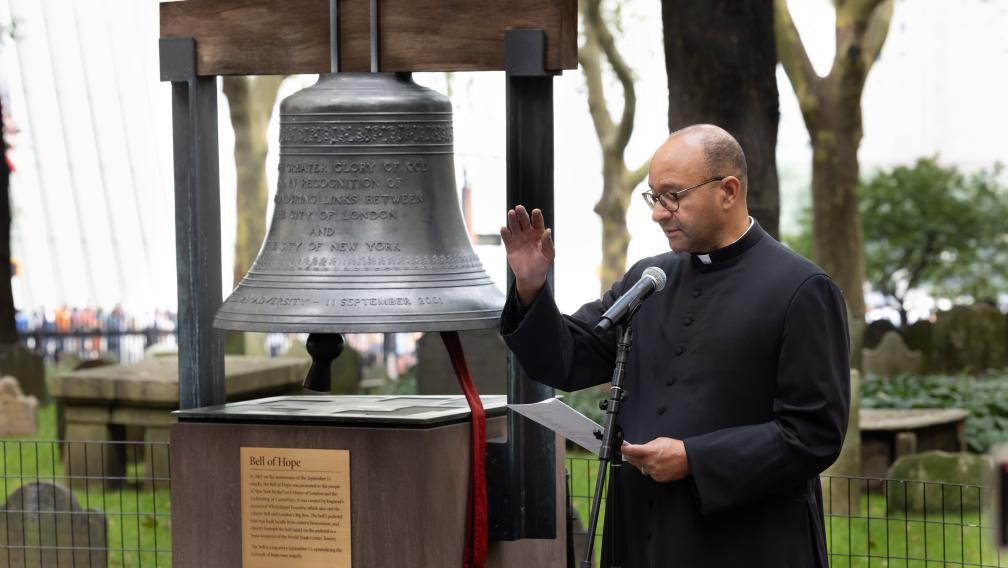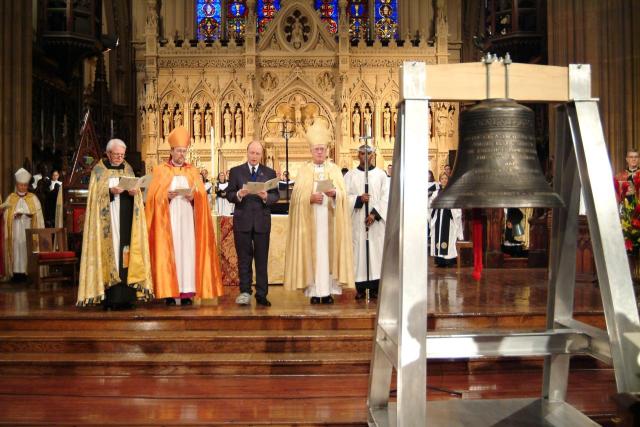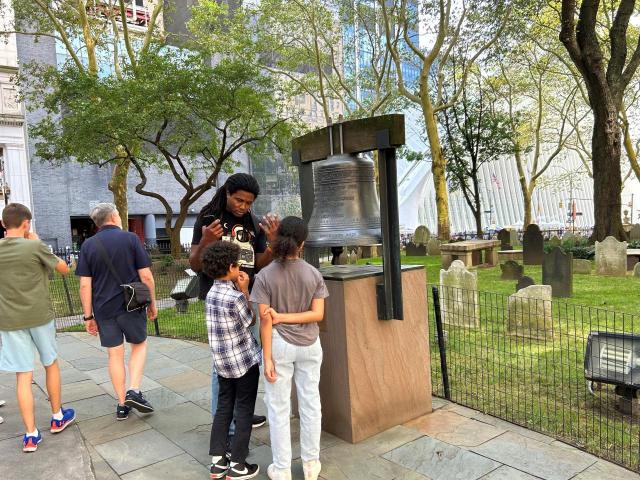Remembering 9/11: Trinity Rings the Bell of Hope

The annual ceremony is both a memorial to the lives lost in the tragedy and a call to be God’s instruments of peace in the world.
Every year, rain or shine, in seasons of turbulence and tranquility, the Trinity Church community gathers at St. Paul’s Chapel on the morning of September 11 to ring the Bell of Hope.
A gift from the City of London to the people of New York City, the bell is always rung precisely at 8:46am — the exact time the first hijacked plane struck the north tower of the World Trade Center.
As a parish at the heart of Lower Manhattan, with a historic chapel located less than 100 yards from the World Trade Center site, Trinity Church was forever changed by the events of 9/11. We will never forget the nearly 3,000 victims who lost their lives on this day or the hundreds of rescue workers and volunteers who contributed to the recovery effort.
The yearly memorial service reminds us of their enduring legacies. The Rector of Trinity Church, the Rev. Phillip A. Jackson, rings the bell in a pattern of four sets of five strikes, following the tradition of the New York City Fire Department’s salute to the fallen. Among the dead on 9/11 were more than 400 uniformed personnel, including 343 firefighters.
“For me, the moment never loses its poignancy,” said Father Phil. “We lost so many of our people that day. We mourn them, we miss them, and we're here to remember them.”
In 2002, on the first anniversary of the attacks, the Most Rev. George Carey, Archbishop of Canterbury, and Michael Oliver, London’s mayor, presented the Bell of Hope in a ceremony at Trinity Church. As an inscription on the bell explains, it’s a gift from the City of London to the City of New York, “Forged in adversity — 11.September.2001.” The bell was cast at London’s centuries-old Whitechapel Bell Foundry, which also cast the Liberty Bell in 1752 and London’s Big Ben in 1858.
The bell was permanently installed at the western entrance of St. Paul’s Chapel. Despite its proximity to the World Trade Center site, the colonial-era building was not damaged on September 11. During the nine months that followed the attacks, the chapel opened its doors to rescue crews, police, firefighters, and volunteers from across the country, becoming a site of refuge and respite.
We lost so many of our people that day. We mourn them, we miss them, and we're here to remember them.”
The Rev. Phillip A. Jackson
In honor of these selfless acts of service, it is Trinity’s tradition to recite the Prayer of St. Francis during the annual memorial. The prayer calls on all people to become instruments of peace, sowing love where there is hatred, hope where there is despair, and unity where there is discord: “For it is in giving that we receive.”
Over the past two decades, Trinity Church has rung the Bell of Hope on other days of the year to honor victims of mass shootings or acts of terrorism, always with prayers for a more peaceful future.
Decades after hatred threatened to tear our city apart, the bell continues to be a symbol of the triumph of hope over tragedy.
Top image: The Rev. Phillip A. Jackson at St. Paul’s Chapel, September 11, 2023.
This article is based on an earlier story by Jim Melchiorre.







